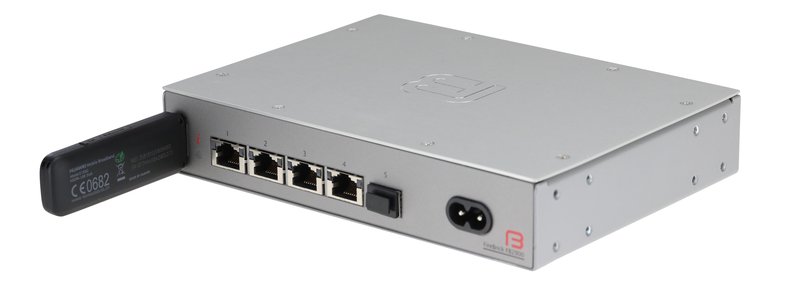The FB2900 and its predecessor the FB2700 have a USB support which allows a 3G or 4G USB dongle to be attached.
This can provide fail-over Internet connectivity in the event of your main DSL or fibre connection going down, or can be the primary internet connection in places where there is no directly connected Internet service available.
ISP are using this feature to provide their customers Internet access whilst their cabled Internet access is being installed and also for routing the customers' IP addresses over a tunnel over the 4G network in fail-over situations.

Multiple USB Dongles can used via a USB hub - however the benefits of bonding multiple 3G are small, as you'll typically be contending with yourself and so there will be little or no added bandwidth. Using multiple dongles with SIMs from different providers may provide extra resilience in the case of one having a problem.
Out of the box most 4G dongles will act as an 'ethernet' device, and so the FireBrick or a computer will see it as a USB ethernet adapter. The Dongle runs a DHCP server and will dish out IP addresses to you in the 192.168.0.x range. Then, once its connected to the Internet on the 4G side, it will give you natted internet access.
The Status-Subnets page on the FireBrick will show the address it has received from the dongle.
Although a LTE dongle will work fine in its standard Ethernet mode, and will work with a default factory FireBrick configuration, sometimes its useful to set the Dongle to Serial Modem mode. Such a case is when the mobile service provider is able to route public IP addresses. This is possible, but does require using a computer to configure the dongle, and then further configuration in the FireBrick to support the Vendor ID and so on. We've also seen higher throughput whilst the Dongle is in Ethernet mode.